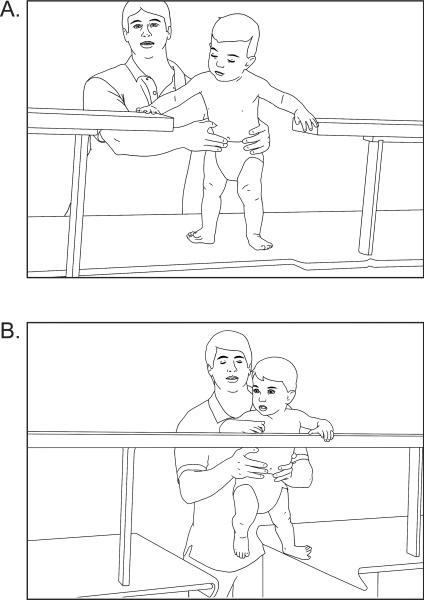Understanding how infants learn to walk is a fundamental question in developmental psychology. While cruising (moving sideways while holding onto furniture) seems like an obvious precursor to walking, new research suggests that A Key Skill In Learning To Walk Involves more than just practicing upright locomotion. This article delves into the surprising discontinuities between cruising and walking, highlighting the importance of posture-specific learning in motor development.
The Assumption of Continuity
Cruising, with its upright posture and alternating leg movements, appears structurally similar to walking. This observation, coupled with the fact that cruising typically precedes walking, has led to the assumption that cruising experience directly translates into walking skills. It seems logical that cruising strengthens leg muscles, improves balance, and provides experience with coordinated leg movements, all of which should contribute to walking.
Challenging the Assumption: A Focus on Affordances
However, a crucial aspect of locomotion is the ability to perceive affordances – understanding what the environment allows for safe movement. Research suggests a critical functional discontinuity between cruising and walking: cruising experience doesn’t necessarily translate into understanding the affordances for walking.
Studies using an adjustable gap apparatus have revealed this disconnect. Infants who are proficient cruisers demonstrate excellent judgment when navigating gaps in a handrail they use for support. They readily cross safe gaps but avoid those that are too wide for their reach. However, when presented with gaps in the floor beneath their feet, these same infants often plunge into the openings, demonstrating a lack of understanding of the need for continuous floor support for walking. This suggests that a key skill in learning to walk involves understanding the affordances for foot placement and support, a skill not acquired through cruising.
Posture-Specific Learning: Cruising, Crawling, and Walking
These findings point to the concept of posture-specific learning. Each major motor milestone – sitting, crawling, cruising, and walking – represents a unique postural configuration with distinct biomechanical demands and perceptual information. Infants must learn to control their balance and perceive affordances anew for each posture.
Interestingly, cruising may share more functional similarities with crawling than with walking. Both crawling and cruising rely heavily on the arms for support and propulsion. The proficiency cruisers exhibit in navigating handrail gaps might stem from the skills developed during crawling, where the arms play a crucial role in maintaining balance and perceiving affordances for support.
Implications for Understanding Motor Development
This research challenges the traditional view of linear progression in motor development. It highlights that a key skill in learning to walk involves not just the physical ability to move upright but also the perceptual understanding of the affordances specific to walking. Cruising, while providing valuable experience with upright locomotion, does not directly transfer to the specific balance control and perceptual requirements of walking. Each postural milestone represents a new learning challenge, requiring infants to recalibrate their perception-action systems.
This understanding of posture-specific learning has important implications for research and intervention in developmental psychology. It emphasizes the need to consider the unique challenges of each developmental stage and to design interventions that specifically target the skills required for each new posture. Future research should continue to explore the complex interplay between perception, action, and experience in the development of locomotion and other motor skills.
